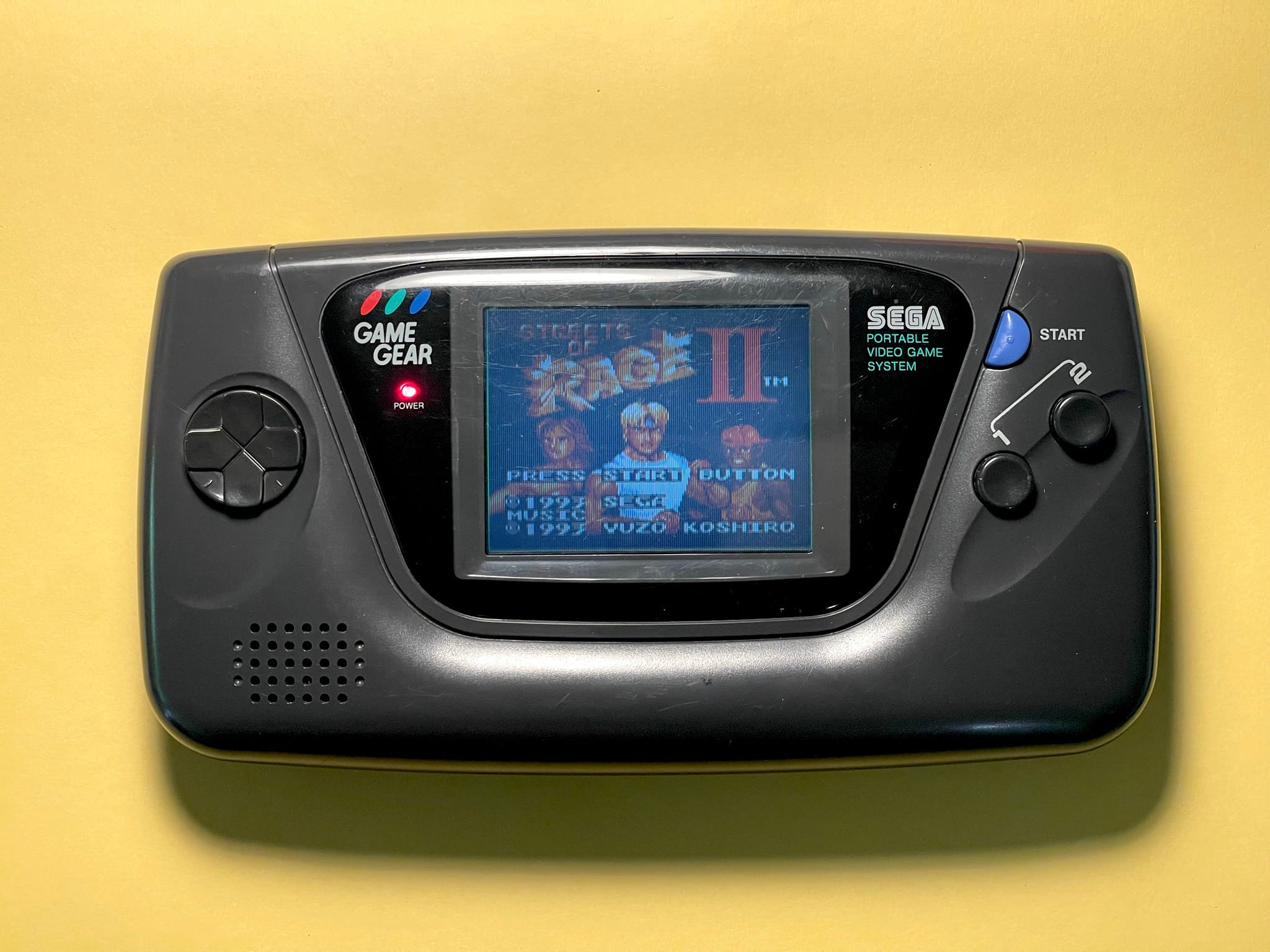Introduction:
In the realm of handheld gaming consoles, the Sega Game Gear holds a special place as a formidable competitor to Nintendo’s Game Boy. With its vibrant color display, impressive library of games, and unique features, the Game Gear captured the hearts of gamers worldwide. Join us as we embark on a journey to discover the wonders of this beloved handheld console.
The Sega Game Gear’s Arrival:
In 1990, Sega unleashed the Game Gear, a handheld console that aimed to outshine the monochrome competition. Boasting a colorful landscape-oriented screen, stereo sound, and a wide array of games, the Game Gear quickly garnered attention and became a sought-after device for gamers of all ages.
A Technological Marvel:
At the core of the Game Gear’s hardware was an 8-bit Zilog Z80 CPU, providing ample processing power for smooth gameplay. Its 3.2-inch backlit TFT LCD screen showcased vibrant colors and brought game worlds to life, setting it apart from its monochromatic rivals. With stereo sound capabilities and a range of control options, the Game Gear aimed to provide an immersive gaming experience.
Gaming Delights:
The Game Gear boasted an extensive library of games, encompassing various genres to cater to diverse player preferences. From beloved Sega franchises like Sonic the Hedgehog to classic arcade ports and licensed titles, the Game Gear offered a rich gaming experience on the go. With the ability to utilize ROM cartridges, players could expand their collection and embark on countless adventures. Some well-known Game Gear games include the already mentioned Sonic the Hedgehog, Shinobi, Streets of Rage, and Mortal Kombat.
On the Move:
With its bulky form factor, the Game Gear was not the most compact handheld console of its time. However, its larger size allowed for a comfortable grip and ergonomic controls. Powered by six AA batteries, the Game Gear offered portability, enabling players to enjoy their favorite games while traveling or during long car rides.
Extending the Game Gear:
To enhance the gaming experience, Sega released various peripherals for the Game Gear. These included the Master Gear Converter, which allowed users to play Sega Master System games on the Game Gear, and the TV Tuner, which transformed the console into a portable television.
Evolving the Game Gear:
Over time, the Game Gear received revisions and special editions. Companies like Majesco Entertainment and AtGames released redesigned models, addressing concerns such as power efficiency and form factor. Limited editions, such as the Coca-Cola collaboration and the Hello Kitty edition, added unique flair to the console.
Competition, Legacy and Discontinuation:
While the Game Gear offered color and more powerful hardware, it faced stiff competition from the Game Boy, which had a longer battery life, a larger game library, and a lower price point. As a result, the Game Gear struggled to gain the same level of popularity and market share as its rival. Sega continued to support the Game Gear until 1997 when it was officially discontinued. In recent years, Sega has released several miniaturized versions of the Game Gear, such as the Sega Game Gear Micro, which feature a selection of pre-installed games and aim to evoke nostalgia among fans of the original console.
Conclusion:
The Sega Game Gear remains a cherished part of gaming history, known for its vibrant colors, engaging gameplay, and diverse library of titles. Despite the dominance of its competition, it left an indelible mark on the world of handheld gaming. Today, enthusiasts and collectors still appreciate the nostalgia and joy that the Game Gear brought to countless players around the globe.
In the realm of gaming history, the Sega Game Gear may have faced commercial challenges, but its enduring legacy lies in the hearts of its dedicated fan base. Despite its shortcomings, the Game Gear has left an indelible mark on the gaming industry, solidifying its status as an important part of gaming history. With its vibrant colors, impressive hardware, and a library of memorable games, the Game Gear continues to be celebrated by enthusiasts, reminding us of the joy it brought to countless players during its time.
Don't forget to visit our Etsy store
